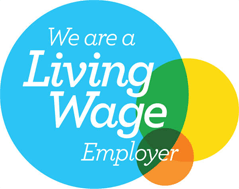FAQs: The Extended Coronavirus Job Retention Scheme
The Coronavirus Job Retention Scheme (furlough) ended on 30 September 2021.
The government has announced that the Extended Coronavirus Job Retention Scheme (ECJRS) will remain open until 30 September 2021. For Frequently Asked Questions about the original Coronavirus Job Retention Scheme, click here
This page was updated on 1 July 2021.
- Has the furlough scheme been extended to continue after April 2021?
- Which employees are eligible for the Extended Coronavirus Job Retention Scheme (ECJRS)?
- What grants will your employer receive on the new extended furlough scheme which runs up to 30th September 2021?
- Does the £2,500 cap in the ECJRS include National Insurance and Pension contributions?
- You were dismissed before the ECJRS was announced, can you ask your employer to reinstate you?
- Are you allowed to work part-time under the ECJRS?
- Under the ECJRS, can you benefit from the furlough leave in order to “shield”?
- Your employer has made you redundant and has served you with notice while you are on furlough. Are you due all of your contractual notice for your 2 months’ notice period?
- Can your employer claim back your notice pay while you are on furlough through the furlough grant?
- You need to look after your children as their school is currently closed. Can your employer place you on furlough?
- Can your employer place you on furlough if you are shielding?
- You are off sick with suspected coronavirus. Should your employer furlough you?
- You are returning from maternity leave and your employer is placing you on furlough. How is this calculated and will you get your holiday pay?
- As a maternity returner, can you take holiday whilst on furlough leave and how much will you receive?
Has the furlough scheme been extended to continue after April 2021?
The government announced on 3 March 2021 that the Coronavirus Job Retention Scheme (furlough) will now run until 30 September 2021.
Which employees are eligible for the Extended Coronavirus Job Retention Scheme (ECJRS)?
For an employee to be placed on furlough for a period running up to 30 April 2021, they will have to have been on the payroll on or before 30 October 2020.
For periods starting on or after 1 May 2021, qualifying employees will have to have been on the payroll from 2 March 2021.
Employees who have not previously been furloughed are eligible for inclusion in the new extended furlough scheme.
Employers will need to claim for a minimum period of 7 consecutive calendar days. Employees who were made redundant or stopped working for their employer on or after 23 September 2020 can be re-employed and put on furlough. This is not mandatory and it is down to the employer as to whether they choose to do this. Employees can be furloughed where they are unable to work because they are shielding or have caring responsibilities including those looking after children.
What grants will your employer receive on the new extended furlough scheme which runs up to 30th September 2021?
The level of grant will remain the same until 30 June 2021, with the government subsidising 80% of furloughed employee’s wages up to a cap of £2,500. Your employer must also pay employer National Insurance and pension contributions.
From 1 July 2021, the government contribution reduces to 70% of your wages. From 1 August 2021, this further reduces to 60%. However, your employer must top up this contribution up to at least 80% (with a cap of £2,500).
Your employers can choose to top up employees’ wages above the 80% total, but this is not compulsory.
Does the £2,500 cap in the ECJRS include National Insurance and Pension contributions?
No, the grant does not cover this. From 1 November your employer has to continue to pay national insurance and pension payments.
You were dismissed before the ECJRS was announced, can you ask your employer to reinstate you?
Under the extended scheme, if you were employed and on the payroll on 23 September 2020 and were made redundant or stopped working for your employer afterwards, you can be re-employed and claimed for. However, there is no obligation for your employer to do so.
Are you allowed to work part-time under the ECJRS?
The extended scheme also allows for flexible working.
Under the ECJRS, can you benefit from the furlough leave in order to “shield”?
The latest guidance from the Government has confirmed that “shielded” individuals (which includes pregnant women) can benefit from furlough leave which means that the Government will reimburse 80% of their wages even if the business has sufficient work for them to do.
Your employer has made you redundant and has served you with notice while you are on furlough. Are you due all of your contractual notice for your 2 months’ notice period?
You should get your full contractual notice pay unless this has been varied to statutory only in a furlough letter or agreement.
Can your employer claim back your notice pay while you are on furlough through the furlough grant?
For periods up to 1 November 2020, employers could claim the furlough grant to subsidise both their employee’s statutory and contractual notice.
From 1 November to 1 December only statutory notice could be claimed for as part of the furlough grant.
From 1 December 2020 onwards, employers cannot claim the furlough grant for either contractual or statutory notice periods. This applies to employees who are being made redundant, and also those who are retiring or who are resigning and have given notice.
You need to look after your children as their school is currently closed. Can your employer place you on furlough?
As long as you are eligible for furlough (you will need to have been on the payroll on or before 30 October 2020) your employer can place you on furlough to care for your children. However, this is not mandatory and the decision whether to do this is up to your employer.
Can your employer place you on furlough if you are shielding?
If you are considered to be clinically extremely vulnerable, or are at the highest risk of severe illness from coronavirus, your employer can place you on furlough.
You are off sick with suspected coronavirus. Should your employer furlough me?
A short term illness or self-isolation should not be a consideration for your employer when deciding whether to furlough you. If an employee with a short-term illness or one who is self-isolating does not get contractual sick pay then they may be able to get Statutory Sick Pay.
You are returning from maternity leave and your employer is placing you on furlough. How is this calculated and will you get your holiday pay?
Furlough pay should be calculated on your actual pay and not on your statutory maternity benefit. They are likely to pay 80% in line with the furlough grant.
As a maternity returner, can you take holiday whilst on furlough leave and how much will you receive?
Yes, you can still take annual leave during your furlough. Your employer must pay you full pay rather than 80% as you have a statutory right to a minimum of 28 days’ paid annual leave each year.
For expert advice on furlough leave and the Extended Coronavirus Job Retention Scheme, contact our Employment Law Team on 01273 609911, or email info@ms-solicitors.co.uk.


